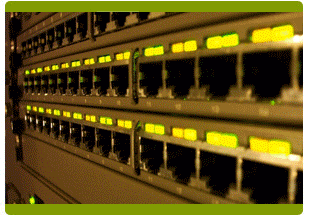MPLS Border Gateway Protocol (BGP)
A networking system allows employees of an organization to share files which help them to integrate their work. They can send their files or business critical information thru e-mail or instant messaging tools. So a secure a reliable network connection is required to protect the data transferred through e-mail or instant messaging. MPLS offers extremely scalable, protocol agnostic, data-carrying mechanism which transfers data packets with assigned labels across the network through virtual links. Extensions of the BGP protocol can be used to manage an MPLS path. The Border Gateway Protocol (BGP) is a path vector protocol which acts as a core routing protocol of the Internet. BGP is an important internet protocol used by ISP to establish routing between one another. It maintains a table of IP networks or prefixes and assigns network reachability to autonomous systems; as a result it is indirectly used by the Internet users. iBGP protocol is used among the routers in autonomous system to command the internal routers. BGP routing information components are as follows:
- Prefix or IP address (network number) of the destination.
- Autonomous System (AS) path - record of AS’s which a route go by on its way to the local router. AS is where the route begin list in maintained in the order of AS nearest to local router.
- Path attributes – It provides other details regarding the AS path. Ex: next hop.
When MPLS cloud is utilized at core, BGP can be deployed at the network edges with the core routers carrying just the information about the BGP’s next step. BGP establishes loop-free routes and share routing information among the group of routers (autonomous systems). MPLS cloud does not scatter BGP across the network. MPLS provides end to end transport for BGP routes. This can be done by running BGP everywhere, redistributing BGP into Interior Gateway Protocol and running GRE tunnel from PE to PE. In case of large scale network, run an MPLS free BGP core. Make sure to always use single area if open shortest path first option is implemented in network.
MPLS cloud enhances routing functionality and allows IP traffic to travel over an ATM network. MPLS moves network traffic over underutilized paths for a better ROI for the service provider. Communication taken place between one end and other end of the MPLS cloud will be visible to every user of the same network. So it is the responsibility of administrator to maintain required security or access rights in the network connection.
MPLS labels are added to the update messages that a router sends. Routers exchange the following types of BGP messages:
- Open messages— once a TCP connection is established between routers they start transferring open messages. Every message contains IP address of the message sender and the AS number to which the router is connected.
- Update messages— if the route is new, modified or broken then the router sends update message to the adjacent router. Update message includes both functioning and non functioning paths. The Network Layer Reachability Information (NLRI) in the message tracks the IP address of functioning routes.
- Keepalive messages— Router sends signal to check the availability of nearby router. The signal is the Keepalive message which contains only the message header.
- Notification messages— Router sends a notification message if an error is detected.
Now let us analyze how BGP sends MPLS Labels with routes? BGP passes route along with the MPLS label that is mapped to that route. BGP update message contains the MPLS label mapping information about the route. Routers make sure that they can send routes with MPLS labels. If the verification between the routers is done then the MPLS labels are added to outgoing BGP updates. Refer figure1 for packet forwarding done by BGP using labels in an MPLS VPN network.

Figure1. BGP packet forwarding in MPLS VPN
Routes between the MPLS labels are encoded with multiprotocol extensions and contain an MPLS label. MPLS labels that travel between routers are guided by the route map. Make sure to specify the routes for Router distributing MPLS labels. In case of router receiving MPLS labels, specify the routes which are accepted and installed in BGP table.
FatPipe network offers networking products such as IPVPN, MPVPN, QoS, WARP etc which can provide 900% more secure and 300% more redundant network connection. BGP programming may not be required for FatPipe products.




